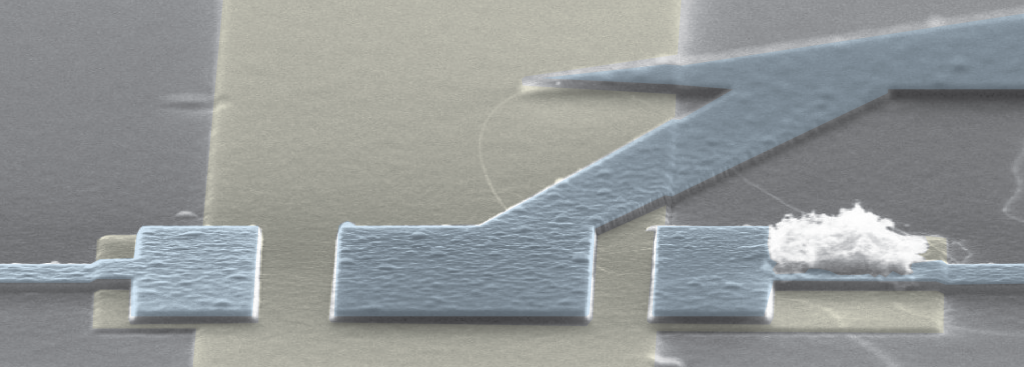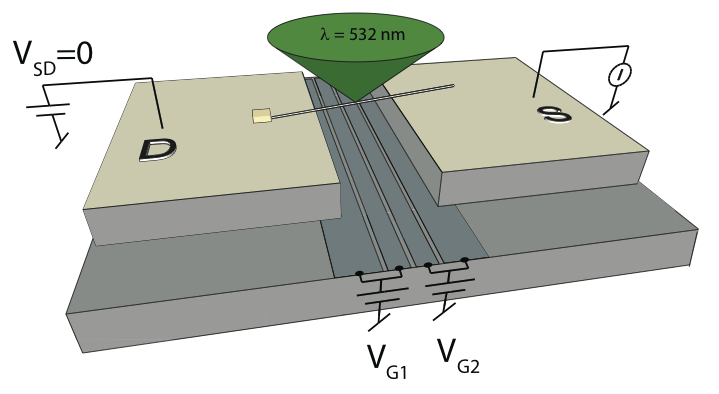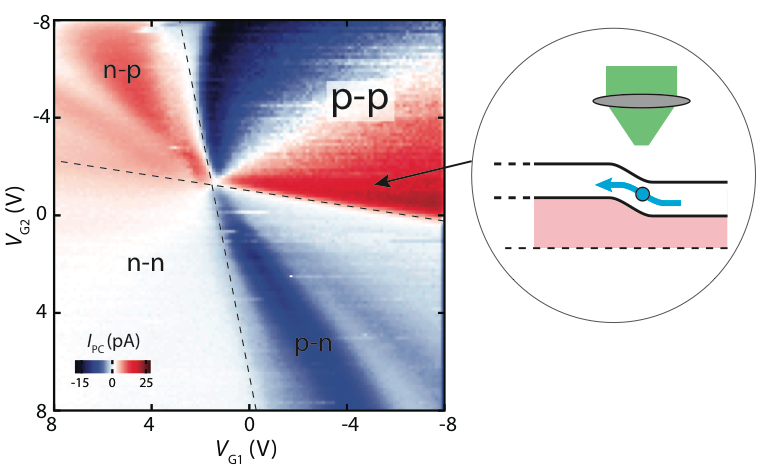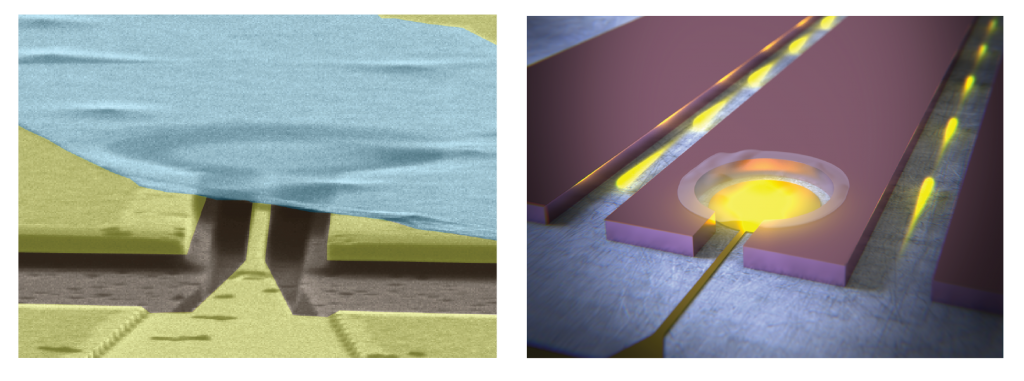Coherence is a widely used concept in quantum mechanics. When a quantum system interacts with its environment, the loss of information about the phase of quantum states is defined as decoherence. Decoherence plays a crucial role in quantum information processing: in contrast to classical bits that suffer only from relaxation in the form of bit flips (loss of energy), quantum bits are much more fragile as their state can also be lost by decoherence of the phase information stored in quantum superpositions. As mechanical objects are now reaching the quantum regime, it is interesting to think about how the concept of decoherence can be applied to the motion of a mechanical resonator.
In their work in Nature Communications, Schneider et al. have explored the concept of decoherence applied to a mechanical resonator. By studying very sensitive nanotube mechanical resonators at low temperatures using a new, high-speed detection technique, they were able to observe and identify a process of decoherence in the motion of a carbon nanotube.

Figure: Electron microscope image of a suspended carbon nanotube (white curling string) suspended between two metal electrodes (blue). The carbon nanotube is only 1 nm (about 10 atoms) in diameter. Near the trench, the nanotube sticks to the metal and is pulled into a tight string that can vibrate like a guitar string. The blue electrodes are also used for injecting and detecting current flowing through the nanotube, which is used to sense the nanotube motion. Below the nanotube is a local gate (yellow) that is used to shake the nanotube string, making it vibrate..
What does “decoherence” mean for a mechanical resonator? Similar to the loss of information of the phase of a quantum superposition of a qubit, decoherence in a mechanical resonator corresponds to the loss of information about the phase of the oscillations in the position of the mechanical object. In the animation shown below, we show side-by-side the processes of oscillation, relaxation, and decoherence for a quantum bit and a mechanical resonator. In both cases, the loss of phase information comes in through random fluctuations of the frequency of the motion, where “motion” for the qubit corresponds to oscillations of the Bloch vector, while for the mechanical resonator, “motion” is simply the oscillations of it’s position.
Movie sequence: A sequence of videos showing (i) how to relate the evolution of a quantum superposition of a qubit to the motion of a mechanical resonator (ii) how to visualize the decay of a qubit and the damping of motion, (iii) the effect of dephasing on the coherence of a qubit and on the motion of a vibrating string, and (iv) the combined effects of dissipation and dephasing on qubits and mechanical motion. See the description box on the youtube pages for a detailed explanation of the videos.
To visualize this, it is useful to think about the motion of a guitar string. When you pluck a guitar string, it will vibrate up and down at its resonance frequency, and after some time, this motion will slowly decay as they lose energy. The vibrations in the string lose energy due to damping from the air and transmitting sounds into the guitar body and the room. This process of losing energy is called dissipation.
Another related effect, which is often overlooked in the response of mechanical resonators, is dephasing. Dephasing, which leads to decoherence, and in this case, rather than losing energy, instead the frequency of the oscillation is changing randomly in time: imagine, for example, that someone was turning the tuning screw on the guitar string while it was vibrating without you knowing about it. These random fluctuations in the frequency will make you lose track of the phase of the oscillations of the string since sometimes it will vibrate a bit faster, and sometimes a bit slower. You can “hear” the type of sound that such a “bad” qubit would make in this youtube video here:
In the experiment, by measuring the mechanical response of the nanotube in two different ways, one “spectral” technique by slowly sweeping the frequency, and one “ring down” technique by plucking the nanotube and looking at how low it takes for the sound to decay, Schneider et al observed that the nanotube in their experiment was not only subject to dissipation (energy loss), as assumed in all previous nanotube experiments, but it is also influenced by dephasing that caused decoherence of its motion.
Although the experiments were performed in the classical regime, the concepts identified in the classical motion would also apply directly to quantum superpositions of mechanical motion, a goal of the current research in quantum mechanical resonators.
For more information, see the article here in Nature Communications and also the press release on the TU Delft website.







